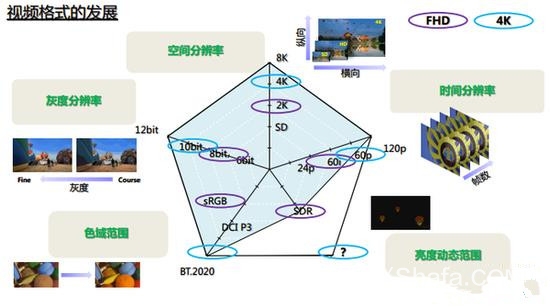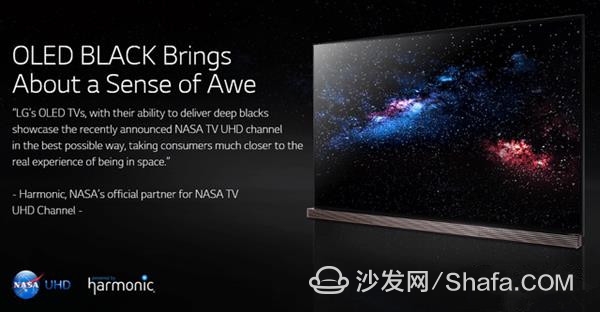Pin Header Connector,Pin Header Female,Male Header Pins,Right Angle Pin Header Cixi Xinke Electronic Technology Co., Ltd. , https://www.cxxinke.com










Why HDR fire? Which TV brands use?
Do not know if you still remember when a few years ago when 4K just emerged, the home appliances store, television new conference will be overwhelming publicity 4K scene. In the store, the shopping guides danced like consumers show the high-definition and accurate color performance brought by the 4K technology, and of course, to put on 1080P resolution TV to do a comparison. In fact, every year in the TV market, there will be a new marketing topic, OLED, QDs go on and on, and this year was the hottest, it is HDR.
This year, both the traditional TV brands and the emerging Internet TV brands almost all regard HDR as one of the main targets. For your own flagship product, if you do not mention HDR, you are too embarrassed to call it a high-end product. It happens that this year is also the year that OLEDs and Quantum dots have matured. At this stage, we will see OLED HDR TVs, quantum dot HDR TVs, and 4K HDR TVs. The addition of HDR also provides more possibilities for their quality performance.
HDR technology can better restore the real scene
So why is HDR fire? Not other display technologies. In fact, regarding the current video quality, there are five very important dimensions. I believe we will have some understanding. They are resolution, color gamut, grayscale, frame rate, and SDR, respectively, which have basically matured enough for the first four dimensions. The dimensional SDR standard has not been welcoming innovation for 50 years (most TV products currently Still stuck in the HDR standard, until the emergence of HDR ushered in a turnaround.
The emergence of HDR makes the development of video formats more complete
The birth of HDR re-planned the research direction of video shooting, codec and imaging. In a strict sense, HDR is a standard and cannot be simply understood as a technical means. The most direct effect of HDR technology is the deeper black display and more details, but it can be improved to a more realistic brightness in terms of brightness. It can provide users with a more layered picture and more time to see. To the details. The improvement is so obvious and HDR is a direction to be developed. This is why so many manufacturers have used HDR as a gimmick and development target this year.
Before we talk about what the HDR standard is, we should know that there are currently two standards for HDR, namely "HDR 10" and "Dolby Vision," but it is interesting that most manufacturers will only promote their own products. Shows support for HDR, but I never say which standard is supported. Of course, the reason is very simple. I do not want consumers to know that they do not support all HDR video content. In simple terms, if the TV supports the HDR 10 standard, HDR effects cannot be achieved when playing Dolby Vision standard video.
Dolby Vision Standard
At present, the HDR 10 standard is widely used by joint venture brands such as Sony, Samsung, and LG, while Dolby Vision is used by domestic brands such as TCL and Skyworth. In fact, HDR 10 and Dolby Vision have no absolute good or bad, but Dolby Vision is more complicated in coding algorithms and the standards are relatively more demanding. Dolby is also actively deploying Dolby Theater and ultra-high-definition Blu-ray. field. Of course, it is not ruled out that the UHD Development Alliance will release an upgraded version of HDR 12 in the future.
HDR 10 standard
Now we know that HDR has two standards, but for HDR TVs of different technical specifications, even the same standard, it will inevitably be different in the display effect, just like everyone is always talking about true and false 4K. When manufacturers do product positioning, they will use different costs on TV depending on the price segment, which of course is understandable, after all, a penny.
LG Signature G6P TV Supports HDR10/Dolby Vision HDR Technology Standards
So far, there is no complete and strict HDR television standard in the world. However, this year, the China Electronic Chamber of Commerce and the China Electronic Technology Standardization Institute have issued the "HDR Display Technology Certification Standards" and are also the first batch of certified products. The HDR certification mark was issued. It is reported that there are currently six major brands that have been certified. HDR TVs are mostly concentrated in 55-inch and 65-inch, accounting for more than 70% of the entire HDR market. It is expected that the overall sales this year will be within 1 million units, and consumption is expected to grow exponentially next year.
Requirements for achieving HDR: Brightness
We all know that the biggest feature of HDR technology is that it has a very high brightness dynamic range. In general, the brightness range that the human eye can observe is 10^5 cd/m2. The closer the TV's peak brightness is to this standard, the better the effect will be. The more obvious. At present, home-level flagship TVs can achieve a peak brightness of more than 1000 nits. This figure is already quite impressive, but Sony's flagship Z9D is said to have reached 4000 nits this year. Once again, it laments the power of black technology.
The brightness range that human eyes can observe is 10^5 cd/m2
color
The effect of high brightness is not just more dazzling sunlight, but more eye-catching lights. The high brightness is only one quadrant of the brightness dynamic range, and the other is a very low brightness, which can show a deeper black. There is also a good level of control between this very high and very low brightness, which is the basic condition for implementing HDR technology. With this extreme brightness and darkness and level control, the color of extreme brightness can be expressed more accurately. For example, the colorfulness of the fireworks highlights, the gorgeousness of the night scene in the city, and the richer color gradation under normal brightness.
HDR brings brightness dynamic range, but also brings more color, forming a three-dimensional color space
Decoder chip
In addition to achieving HDR standards on the display, HDR decoding technology is also indispensable. The HDR chip source covers more color and brightness information, so the decoding chip and algorithm must be more powerful. At present, we use 10bit HDR decoding as the reference standard, and 10bit HDR decoding can output 1.07 billion colors, which will bring more powerful power to HDR decoding. Of course, the threshold of decoding technology is not high. Morningstar and Raychem's latest high-end chips mostly support decoding of 10bit HDR.
10bit HDR decoding
For those HDR TVs that can meet the above three points, most of them are currently high-end models of major brands. They have better backlighting technology and better picture quality output technology. In fact, most midrange models currently do not achieve the best HDR standard in terms of brightness and color. Those mid-end TV products that claim to have HDR technology at a price of around 2000-4000 are usually decoded. Supported HDR film sources.
Is TV any use?
First of all, let's first talk about the current development of HDR, HDR as a set of complete technical standards from the content recording, to the post-processing, transmission, decoding and terminal display. We mentioned so much in front of us that we only stayed in the improvement of terminal display technology. However, both HDR and 4K are facing the same problem, which is the lack of film sources, which makes it difficult for users to experience the impact of true HDR technology.
HDR lacks current source
However, we are not totally unable to see hope for HDR sources. Currently Warner Bros., Penguin Pictures, Amazon, Netflix, Dolby, and other content providers are conducting research and development on HDR content. Warner Bros. has launched several films using HDR technology. Netflix and Amazon are also planning to reach the end of 2016. Post more than 150 hours of HDR content. With the abundant sources, we will also see more HDR content, and the advantages of HDR TV will gradually show up.
Final Fantasy 15 Confirms Support for HDR
At the same time, the author also found a very interesting thing, that is, this year a number of new large-scale games have announced support for HDR technology, like "Gears of War 4," "Final Fantasy 15," "GT Sport," etc., but do not know Did everyone find that monitors that support HDR technology are very rare or not at all? At this time, if the player wants to experience the HDR game experience, I am afraid that only through HDR TV to achieve.
Looking forward to the performance of HDR TV in 2017
For HDR this year's display technology, I give it a positive attitude. Although HDR sources are relatively scarce at present, even if they watch ordinary SDR sources, HDR TVs have the advantage of better picture quality than ordinary SDR TVs. The future of HDR TVs will continue to follow up with the source of HDR TVs. The advantages will be more pronounced. Another point is that we mentioned before, in order to experience the effect of HDR games, TV is the best choice for terminal display.
HDR has been so popular this year and has become the target of many manufacturers. Through the analysis of this article, we have also seen the truth. We are also very much looking forward to the performance of HDR TV in 2017.
Smart TV/box information can focus on smart TV information network sofa butler (http://), China's influential TV box and smart TV website, providing information, communication, etc. on TV boxes, smart TVs, smart TV software, etc. Answering questions.